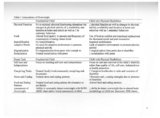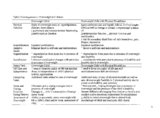| Description |
Purpose: To explore how parents develop and fonn health promotion beliefs and practices related to food and physical activity choices for children with spina bifida to prevent overweight. Significance: Overweight rates for U. S. children exceed the rates of previous generations. For children with physical disabilities, overweight rates are 30%, as compared to 17% for their peers without disabilities. For children with physical disabilities, overweight has a greater impact on physical functioning and quality of life, acting as a secondary condition or disability. Specific Aims: To (a) describe how parents of children with physical disabilities understand and make decisions about food and physical activities choices, (b) detennine barriers and supports for parents related to food and physical activity choices for their children, and (c) describe how parents of children manage and prevent overweight in their children with spina bifida. Methods: Descriptive, exploratory, qualitative design using semistructuredinterviews with parents of children with spina bifida (6 to 12 years of age) with verbatim transcription and constant-comparative analysis. Results: Three themes related to health promotion for children with spina bifida were (a) promoting health by maintaining healthy bowel function and managing spina bifida, (b) managing food, and (c) encouraging physical activity. Health promotion forthese parents was based on maintaining optimal bowel function and disease management and minimizing food restriction practices and assessing school-age children for their children. Managing food involved teaching, monitoring, adapting, portioning, awareness of overweight risk, and restricting food. Encouraging physical activity included facilitating, hindering, and dealing with becoming sedentary and overweight as children reached puberty. Implications: Knowledge from this study may assist parents and healthcare providers change their focus from disease-related systems and function to more holisticperspective by assessment of social interaction and participation in physical activities. Anticipatory guidance can be enhanced to include promoting the use of food substitution and minimizing food restriction practices and assessing school-age children for their current level of physical activity with encouragement for them to remain physically active. |













































































































































































































